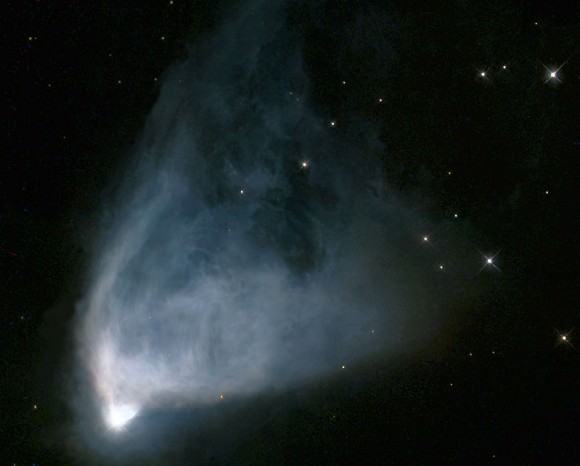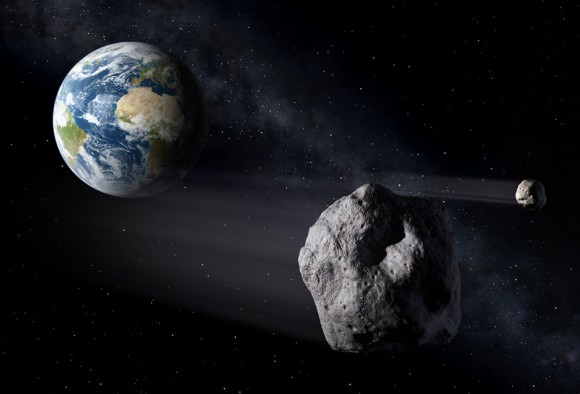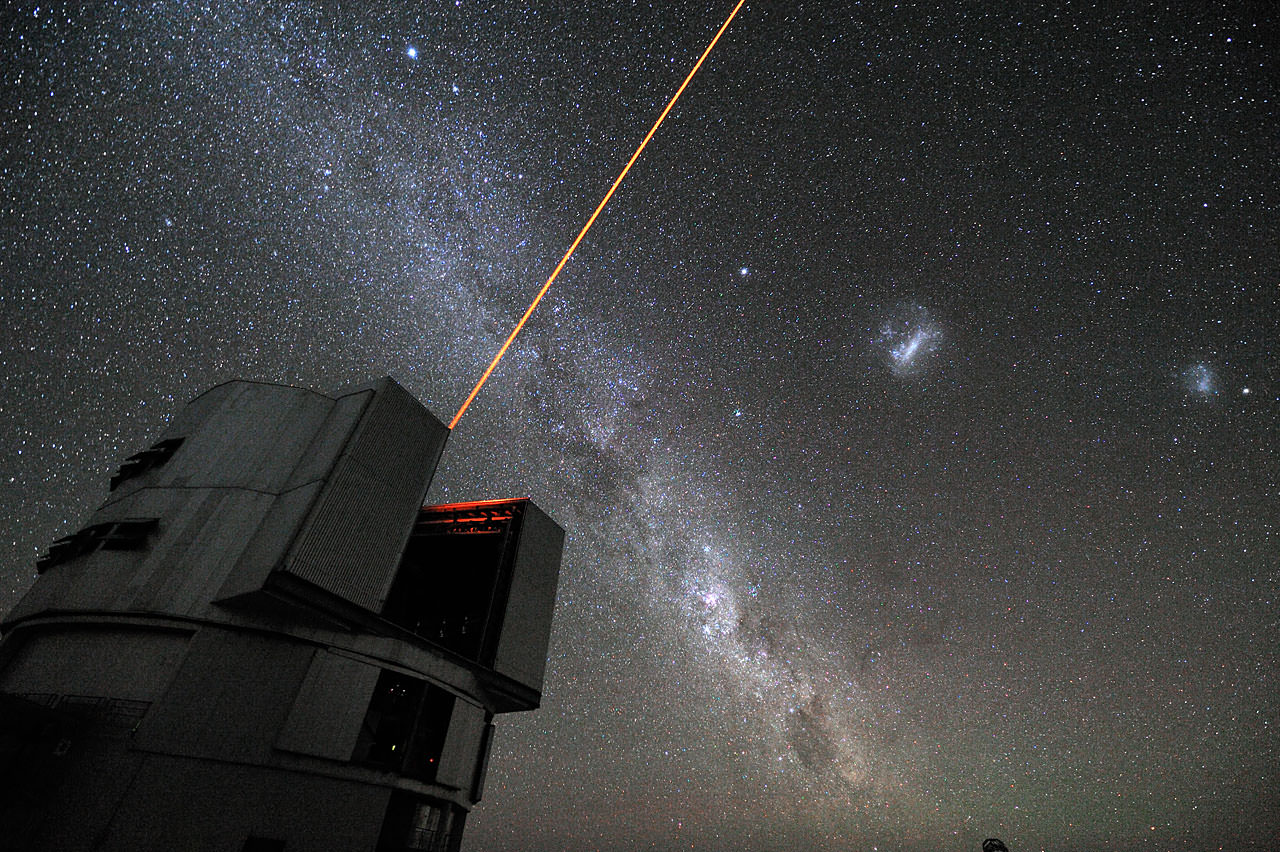It’s a cornerstone of modern physics that nothing in the Universe is faster than the speed of light (c). However, Einstein’s theory of special relativity does allow for instances where certain influences appear to travel faster than light without violating causality. These are what is known as “photonic booms,” a concept similar to a sonic boom, where spots of light are made to move faster than c.
And according to a new study by Robert Nemiroff, a physics professor at Michigan Technological University (and co-creator of Astronomy Picture of the Day), this phenomena may help shine a light (no pun!) on the cosmos, helping us to map it with greater efficiency.
Consider the following scenario: if a laser is swept across a distant object – in this case, the Moon – the spot of laser light will move across the object at a speed greater than c. Basically, the collection of photons are accelerated past the speed of light as the spot traverses both the surface and depth of the object.
The resulting “photonic boom” occurs in the form of a flash, which is seen by the observer when the speed of the light drops from superluminal to below the speed of light. It is made possible by the fact that the spots contain no mass, thereby not violating the fundamental laws of Special Relativity.

Another example occurs regularly in nature, where beams of light from a pulsar sweep across clouds of space-borne dust, creating a spherical shell of light and radiation that expands faster than c when it intersects a surface. Much the same is true of fast-moving shadows, where the speed can be much faster and not restricted to the speed of light if the surface is angular.
At a meeting of the American Astronomical Society in Seattle, Washington earlier this month, Nemiroff shared how these effects could be used to study the universe.
“Photonic booms happen around us quite frequently,” said Nemiroff in a press release, “but they are always too brief to notice. Out in the cosmos they last long enough to notice — but nobody has thought to look for them!”
Superluminal sweeps, he claims, could be used to reveal information on the 3-dimensional geometry and distance of stellar bodies like nearby planets, passing asteroids, and distant objects illuminated by pulsars. The key is finding ways to generate them or observe them accurately.
For the purposes of his study, Nemiroff considered two example scenarios. The first involved a beam being swept across a scattering spherical object – i.e. spots of light moving across the Moon and pulsar companions. In the second, the beam is swept across a “scattering planar wall or linear filament” – in this case, Hubble’s Variable Nebula.

In the former case, asteroids could be mapped out in detail using a laser beam and a telescope equipped with a high-speed camera. The laser could be swept across the surface thousands of times a second and the flashes recorded. In the latter, shadows are observed passing between the bright star R Monocerotis and reflecting dust, at speeds so great that they create photonic booms that are visible for days or weeks.
This sort of imaging technique is fundamentally different from direct observations (which relies on lens photography), radar, and conventional lidar. It is also distinct from Cherenkov radiation – electromagnetic radiation emitted when charged particles pass through a medium at a speed greater than the speed of light in that medium. A case in point is the blue glow emitted by an underwater nuclear reactor.
Combined with the other approaches, it could allow scientists to gain a more complete picture of objects in our Solar System, and even distant cosmological bodies.
Nemiroff’s study accepted for publication by the Publications of the Astronomical Society of Australia, with a preliminary version available online at arXiv Astrophysics
Further reading:
Michigan Tech press release
Robert Nemiroff/Michigan Tech

